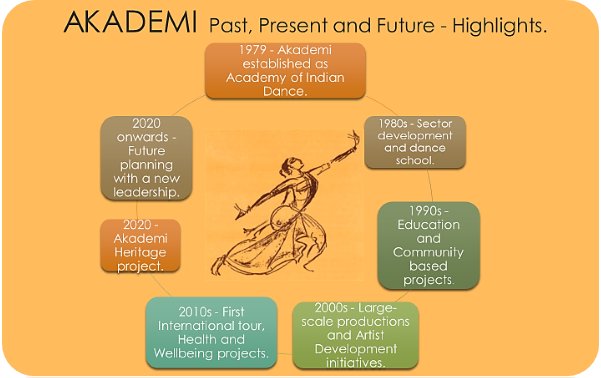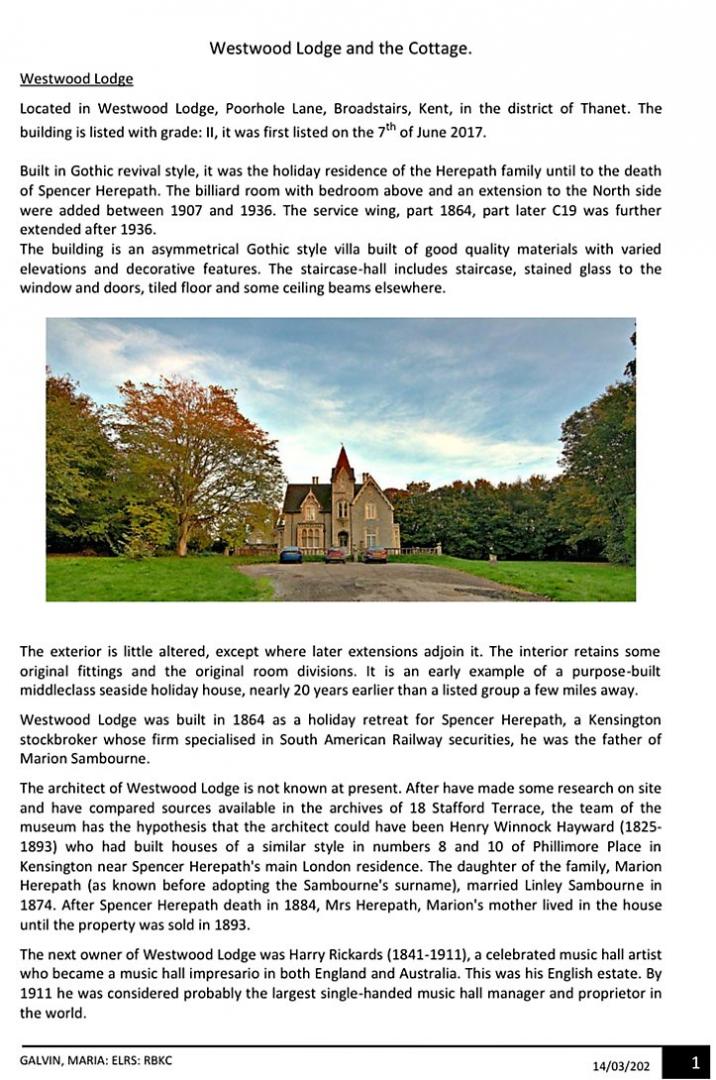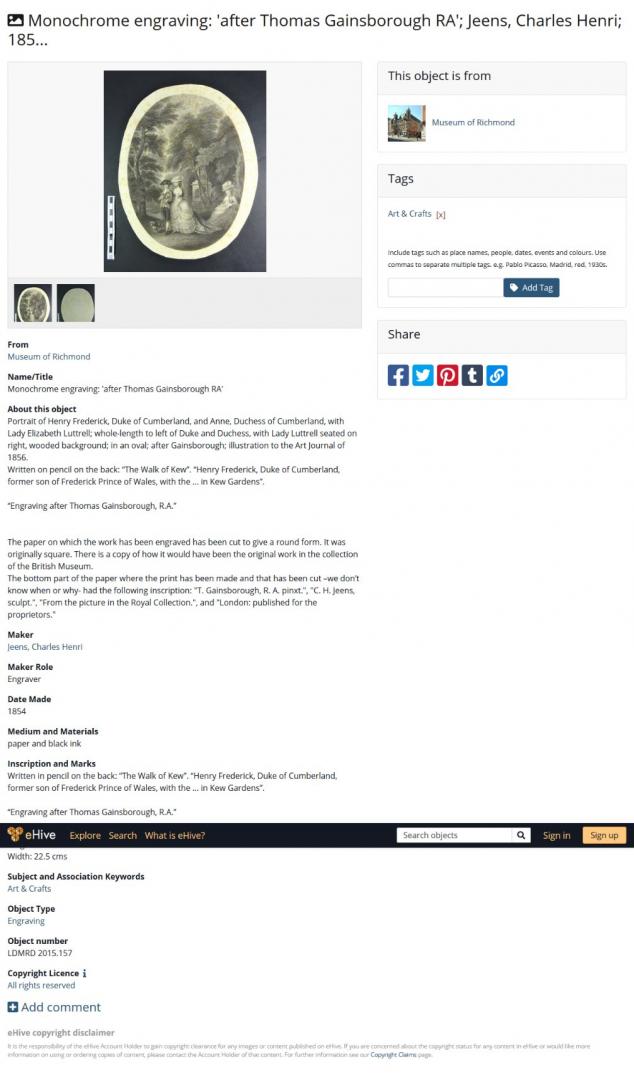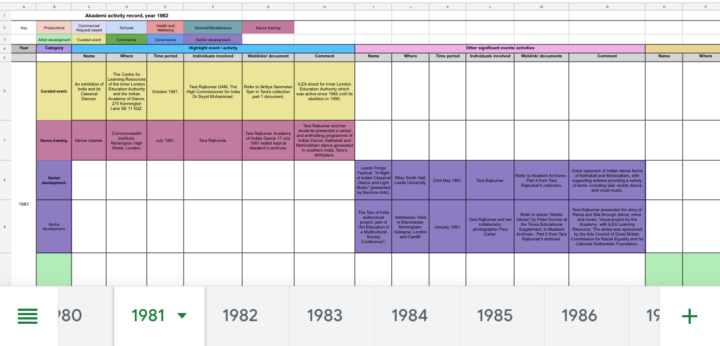Tracing Akademi’s Timeline Through the Archives

This year, we have embarked on an enormous archiving adventure to celebrate Akademi’s heritage and preserve our history at the V&A Museum. We have some wonderful volunteers who are helping us in this process. We invited them to share their experience, work and findings on South Asian dance in the UK. This post in the series deals with the cataloguing part of the work, and how the archive is organised in order to facilitate future work and research into Akademi’s heritage.
In this blogpost, Maria Galvin writes about her experience of discovering Akademi through its archives and tracing a historical timeline of the organisation over the forty years of its existence.
After completing BA Hons in Art History, Maria Galvin started her career in the UK’s arts sector in 2009 as a volunteer at the Book Library of The Courtauld Institute of Art and at the Museum of Childhood V&A. While collaborating with the Royal Society of Sculptors, she produced an inventory of the collection and worked on their archives. She was also involved in the digitisation of the collection at the Museum of Richmond. Having trained in cataloguing while pursuing her Master of Arts in London, she did an internship cataloguing historic objects of a collection in London in 2013. She recently researched and documented artworks of a Victorian property in London, where she also did preventive conservation work. Her ambition is to work as a Collections Manager or as a Curator in the UK. As part of Akademi’s Heritage project, she researches the archives to create a historical timeline representing the projects and activities carried out by Akademi in the past 40 years.
Akademi has brought to life Indian dance in the UK for the past 40 years through the many artists who have shaped the ethos of the organisation and have embodied the intangible artistic heritage from different regions of India. With Tara Rajkumar as the precursor of the movement, 1979 was the beginning of the contribution to the history of Folklore that originated in India through various forms of dance.
With a porcelain doll look, yet with strong character and determination, Tara started a movement that developed and grew through the decades and built cultural bridges between India and the UK, keeping alive in Europe an artistic tradition that started over two centuries ago in her native land. She created a whole universe around Asian dance and opened a door to the imagination of anyone who wanted to join her in Akademi’s mission.
I find Tara hugely inspiring and fascinating to learn about. Her work is a true example of passion for art and dedication to dance. With many social programs and collaborations with different organisations, Akademi developed and grew through the years expanding the audiences and their interests and engagement in the activities of the organisation.

Image above: Extract from a text written as part of research of the collection conducted while working for a museum owned by the Royal Borough of Kensington and Chelsea.
Working with online archive material rather than physical resources has provided me with a different perspective on how to access historic resources and how to organise them remotely. Immersing myself in the richness of Akademi’s Archives has also given me the opportunity to learn about the intangible artistic manifestations differently to how I learnt about them previously while studying Anthropology at university.
Previous to working with Akademi’s archives, I have worked with three-dimensional objects that I could study and look at closely; mainly sculptures and artefacts from art collections, allowing me to put into practice my skills of working in collections management, and my knowledge of Art History acquired whilst studying at University. My task at Akademi’s Heritage project focuses mainly on doing work remotely and collecting information from different resources and identifying the various aspects of the organisation by topics and then compiling them chronologically.
Image below: Extract from the online catalogue of a local museum in London where I worked on different projects: cataloguing the collection and working on accessioning and deaccessioning adhering to the required guidelines and procedures stablished for museums in the UK and following codes of conduct.
Image published with permission from Museum of Richmond

Becoming part of Akademi’s Heritage project team has allowed me to develop further my skills in working with archival material. The opportunity to become involved in the project has expanded my knowledge of South Asian cultural practices. I have learnt about the different historic events that have shaped Akademi to be what it is now.
Through the process of working with the archive resources, I became interested in many different aspects of the development of Akademi through the years, not only in the socio-politic aspect but also in the pioneering role it has played in the development of South Asian dance in the UK. I have also become interested in Indian dance forms and their historical backgrounds, which are much more complex than I first thought; throughout my work I have come across compelling information about the organisation via the poetry, religion, literature, traditions and many other aspects.
My designated task as a heritage volunteer has been to create a historical timeline which can be a document shared between the members of staff, comprising different aspects of the organisation spanning the last four decades. I have been the volunteer solely responsible for populating the timeline, which I very much enjoy working on.

Timeline: Extract from Akademi’s historical timeline organised by years and main areas of work.
There are numerous major events, activities and productions that have been paramount to the development of the organisation and it would be difficult to name just some of them as they are all relevant to what Akademi is today. I found particularly interesting some of the activities developed by the organisation in the late seventies and early eighties, in which the founder of the organisation, Tara Rajkumar herself, performed at major venues, opening a path for South Asian dance in the United Kingdom. These early performances meant the creation of a movement during a time when the UK was experiencing big socio-economic changes due to political turnovers in the seventies and at the beginning of the eighties as well as to the rise of new British Asian communities and their artistic manifestations that contributed to the enrichment of the heritage of the country.
Akademi was central in the creation of new activities happening in different cities in the UK. It involved the participation of individuals from various organisations of different cultures and communities and saw the creation of a cultural movement that brought people together through dance music and performance, creating a precedent in the Arts field in the UK. Through this initiative, Akademi’s founder started a dialogue between South Asian dance and music and other cultural manifestations which is currently ongoing and will continue developing in the future.

“AKADEMI – Past, Present and Future”:
The above graphic shows Akademi’s highlights from its foundation in 1979 and through its decades of existence. The drawing of the dancer placed in the centre of the chart is an illustration from the first brochure designed by Akademi.
Watch this space for more blogposts from our wonderful Heritage Project volunteers.